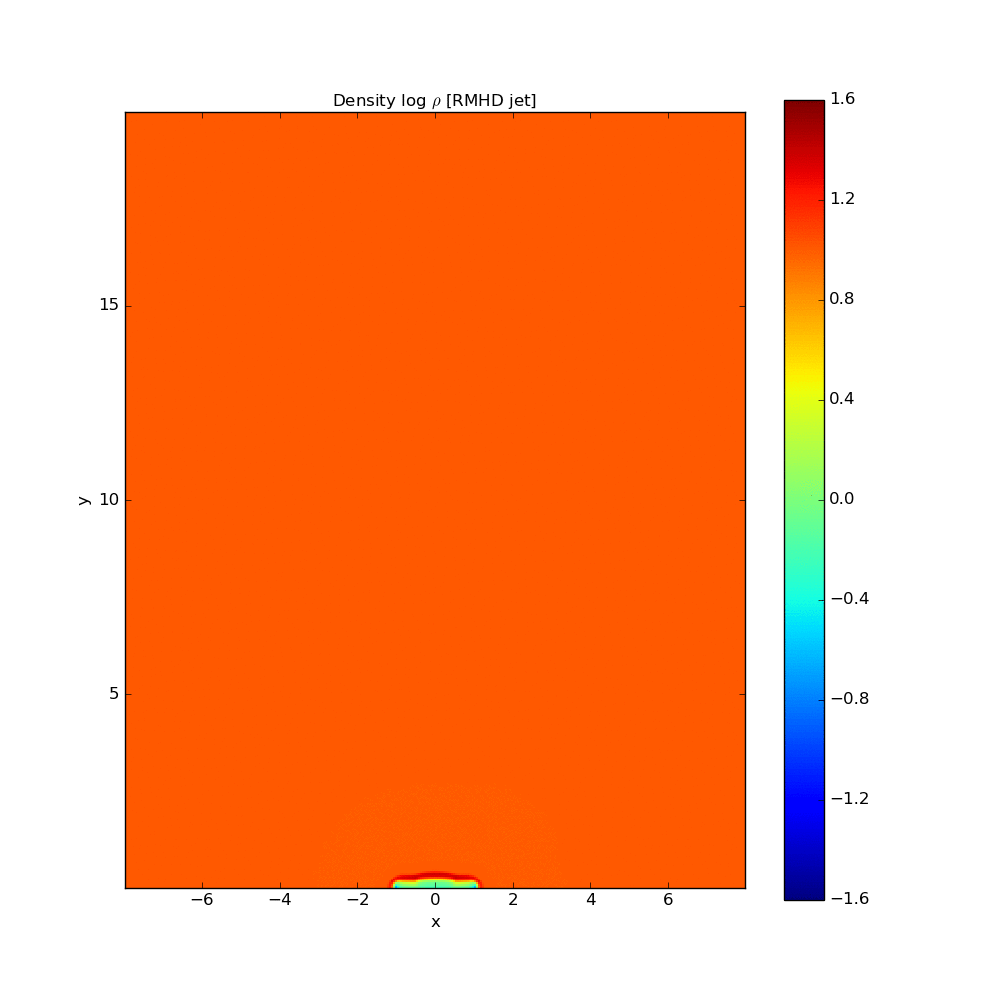My PhD project focuses on combining the PLUTO and RADMC-3D codes to produce synthetic maps of the polarized synchrotron emission emanating from 3D relativistic magnetohydrodynamic (RMHD) jet simulations in the radio through the X-ray. I am studying how the polarized synchrotron emission depends on either the magnetic field morphology within the jet and/or on the chosen electron emission scaling relation. Furthermore, the latest version of the PLUTO code contains a particle module that incorporates physics pertaining to the theory of synchrotron radiative losses, diffusive shock acceleration, and adiabatic expansion.
In order to compute the polarization (including opacity, relativistic aberration, and Faraday rotation/conversion), the astrophysical plasma simulations are used as an input into the ray-tracing code RADMC-3D which generates synthetic images. These full-Stokes ray-traced images allow for a more direct comparison between the jet models and the observations of the jet’s synchrotron emission. The code produces maps of the four Stokes parameters (I, Q, U, and V) separately, and also of the polarized intensity (& EVPAs) as well as maps of both fractional linear and circular polarization.

In parallel, I am analyzing observational data. The data from the MOJAVE program are being used to understand the magnetic field structure within the jet and are going to be compared to the different magnetic field morphologies included in the RMHD jet simulations by looking at the full Stokes images with angular resolution better than 1 milliarcsecond. The properties of each Stokes parameter can be monitored by POLAMI, and can, e.g., confirm the polarimetric properties seen in the synthetic images created in RADMC-3D.
Currently (as of April 2021) I am working on a team to analyze 2019 VLBA data in full-stokes and to finally evaluate a survey of circular polarization maps.
I am member of the Event Horizon Telescope Collaboration, the M2FINDERS team, and the POLAMI collaboration.